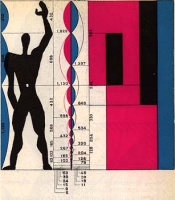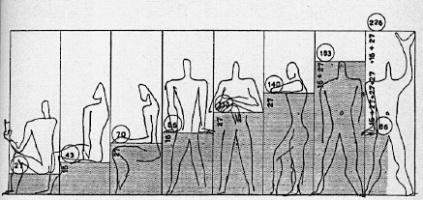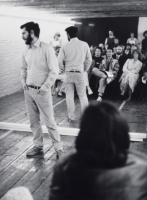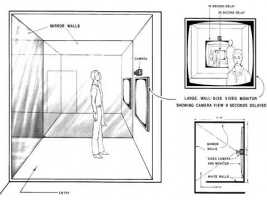User:Luisa Moura/research/references/Luisa Moura, body awareness, 2014
wikipedia: Modulor
(...)
Le Corbusier developed the Modulor in the long tradition of Vitruvius, Leonardo da Vinci's Vitruvian Man, the work of Leone Battista Alberti, and other attempts to discover mathematical proportions in the human body and then to use that knowledge to improve both the appearance and function of architecture.[1] The system is based on human measurements, the double unit, the Fibonacci numbers, and the golden ratio. Le Corbusier described it as a "range of harmonious measurements to suit the human scale, universally applicable to architecture and to mechanical things."
(...)
In 1943, in response to the French National Organisation for Standardisation's (AFNOR) requirement for standardising all the objects involved in the construction process, Le Corbusier asked an apprentice to consider a scale based upon a man with his arm raised to 2.20m in height.[4] The result, in August 1943 was the first graphical representation of the derivation of the scale. This was refined after a visit to the Dean of the Faculty of Sciences in Sorbonne on 7 February 1945 which resulted in the inclusion of a golden section into the representation
wikipedia: Dan Graham
(...) Like these artists, Graham considered himself a writer-artist, publishing essays and reviews on rock music, Dwight D. Eisenhower's paintings, and Dean Martin's television show. His earliest work dealt with the magazine page, predating but often associated with Conceptual art. His work often focuses on cultural phenomena, and incorporates photography, video, performance art, glass and mirror structures. He lives and works in New York (...)
Graham also incorporated video into installations, creating environments where video technology is used to alter the viewer's own bodily experience. One example is the 1974 installation/performance Present Continuous Past(s), Graham began to use two-way mirror walls in relation to real reflections and time-delayed video projections. Also in 1974, he created an installation with a series of videos called "Time Delay Room", which used time-delayed Closed-circuit television cameras and video projections (...)




